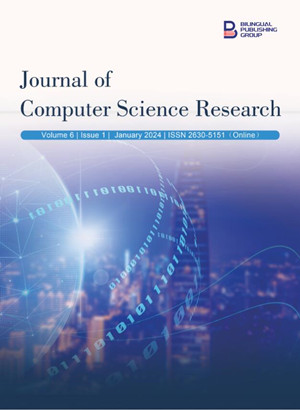
Machine Learning Prediction of Fetal Health Status from Cardiotocography Examination in Developing Healthcare Contexts
DOI:
https://doi.org/10.30564/jcsr.v6i1.6242Abstract
Reducing neonatal mortality is a critical global health objective, especially in resource-constrained developing countries. This study employs machine learning (ML) techniques to predict fetal health status based on cardiotocography (CTG) examination findings, utilizing a dataset from the Kaggle repository due to the limited comprehensive healthcare data available in developing nations. Features such as baseline fetal heart rate, uterine contractions, and waveform characteristics were extracted using the RFE wrapper feature engineering technique and scaled with a standard scaler. Six ML models—Logistic Regression (LR), Decision Tree (DT), Random Forest (RF), Gradient Boosting (GB), Categorical Boosting (CB), and Extended Gradient Boosting (XGB)—are trained via cross-validation and evaluated using performance metrics. The developed models were trained via cross-validation and evaluated using ML performance metrics. Eight out of the 21 features selected by GB returned their maximum Matthews Correlation Coefficient (MCC) score of 0.6255, while CB, with 20 of the 21 features, returned the maximum and highest MCC score of 0.6321. The study demonstrated the ability of ML models to predict fetal health conditions from CTG exam results, facilitating early identification of high-risk pregnancies and enabling prompt treatment to prevent severe neonatal outcomes.
Keywords:
Neonatal; Mortality rate; Cardiotocography; Machine learning; Foetus health; Prediction; Features engineeringReferences
[1] Lawn, J.E., Cousens, S., Zupan, J., 2005. 4 million neonatal deaths: When? Where? Why? Lancet. 365(9462), 891–900. DOI: https://doi.org/10.1016/S0140-6736(05)71048-5
[2] Sedgh, G., Singh, S., Hussain, R., 2014. Intended and unintended pregnancies worldwide in 2012 and recent trends. Studies in Family Planning. 45(3), 301–314. DOI: https://doi.org/10.1111/j.1728-4465.2014.00393.x
[3] The Millennium Development Goals Report [Internet]. United Nations; 2015. Available from: https://www.un.org/millenniumgoals/2015_MDG_Report/pdf/MDG%202015%20rev%20(July%201).pdf
[4] World Health Organization [Internet]. Perinatal Mortality [Accessed 2023 Mar 31]. Available from: https://www.who.int/publications-detail-redirect/9789240068759
[5] Boraas, C.M., Sanders, J.N., Schwarz, E.B., et al., 2021. Risk of pregnancy with levonorgestrel-releasing intrauterine system placement 6–14 days after unprotected sexual intercourse. Obstetrics and Gynecology. 137(4), 623–625. DOI: https://doi.org/10.1097/AOG.0000000000004118
[6] Corso, J.F., 2005. Bone‐conduction thresholds for sonic and ultrasonic frequencies. The Journal of the Acoustical Society of America. 35(11), 1738–1743. DOI: https://doi.org/10.1121/1.1918804
[7] Alfirevic, Z., Gyte, G., Cuthbert, A., et al., 2017. Continuous CTGas a form of electronic foetus monitoring (EFM) for foetus assessment during labour. Cochrane Database of Systematic Reviews. DOI: https://doi.org/10.1002/14651858.CD006066.pub3
[8] Géron, A., 2022. Hands-on machine learning with Scikit-Learn, Keras, and TensorFlow. O’Reilly Media, Inc.: Sebastopol.
[9] Jordan, M.I., Mitchell, T.M., 2015. Machine learning: Trends, perspectives, and prospects. Science. 349(6245), 255–260. DOI: https://doi.org/10.1126/science.aaa8415
[10] Goodfellow, I., Bengio, Y., Courville, A., 2016. Deep learning. MIT Press: Cambridge.
[11] Olayemi, O.C., Olasehinde, O.O., Alowolodu, O.D., et al. 2022. Ensemble learning improvement of clinical diagnoses of knee osteoarthritis risk in adults. Int. J. Intell. Inf. Syst. 11(4), 51-64. Available from: https://www.researchgate.net/profile/Olayemi-Olasehinde/publication/362324563_Ensemble_Learning_Improvement_of_Clinical_Diagnoses_of_Knee_Osteoarthritis_Risk_in_Adults/links/62e358c64246456b55f11d2f/Ensemble-Learning-Improvement-of-Clinical-Diagnoses-of-Knee-Osteoarthritis-Risk-in-Adults.pdf
[12] Raschka, S., Mirjalili, V., 2017. Python machine learning: Machine learning and deep learning with Python, scikit-learn, and TensorFlow 2. Packt Publishing Ltd.: Birmingham.
[13] Han, J., Kamber, M., 2011. Data mining: Concepts and techniques (3rd ed.) Morgan Kaumann Publisher: Burlington.
[14] Jia, N., Zhao, W., Liu, X., 2019. Dempster-Shafer theory-based hierarchical saliency detection. International Journal of Imaging Systems and Technology. 29(3), 329–338. DOI: https://doi.org/10.1002/ima.22322
[15] Fawole, A.O., Shah, A., Fabanwo, A.O., et al., 2012. Predictors of maternal mortality in institutional deliveries in Nigeria. African Health Sciences. 12(1).
[16] Akbulut, A., Ertugrul, E., Topcu, V., 2018. Foetus health status prediction based on maternal clinical history using ML techniques. Computer Methods and Programs in Biomedicine. 163, 87–100. DOI: https://doi.org/10.1016/j.cmpb.2018.06.010
[17] Sundar, C., Chitradevi, M., Geetharamani, G., 2012. Classification of cardiotocogram data using neural network based machine learning technique. International Journal of Computer Applications. 47(14), 19–25. DOI: https://doi.org/10.5120/7256-0279
[18] Batra, A., Chandra, A., Matoria, V. (editors), 2017. Cardiotocography analysis using conjunction of machine learning algorithms. 2017 International Conference on Machine Vision and Information Technology (CMVIT); 2017 Feb 17–19; Singapore. New York: IEEE. p. 1–6. DOI: https://doi.org/10.1109/CMVIT.2017.27
[19] Agrawal, K., Mohan, H. (editors), 2019. Cardiotocography analysis for fetal state classification using machine learning algorithms. 2019 International Conference on Computer Communication and Informatics (ICCCI); 2019 Jan 23–25; Coimbatore, India. New York: IEEE. p. 1–6. DOI: https://doi.org/10.1109/ICCCI.2019.8822218
[20] Park, T.J., Chang, H.J., Choi, B.J., et al., 2022. Machine learning model for classifying the results of fetal cardiotocography conducted in high-risk pregnancies. Yonsei Medical Journal. 63(7), 692–700. DOI: https://doi.org/10.3349/ymj.2022.63.7.692
Downloads
How to Cite
Issue
Article Type
License
Copyright © 2024 Author(s)

This is an open access article under the Creative Commons Attribution-NonCommercial 4.0 International (CC BY-NC 4.0) License.




 O. C. Olayemi
O. C. Olayemi






